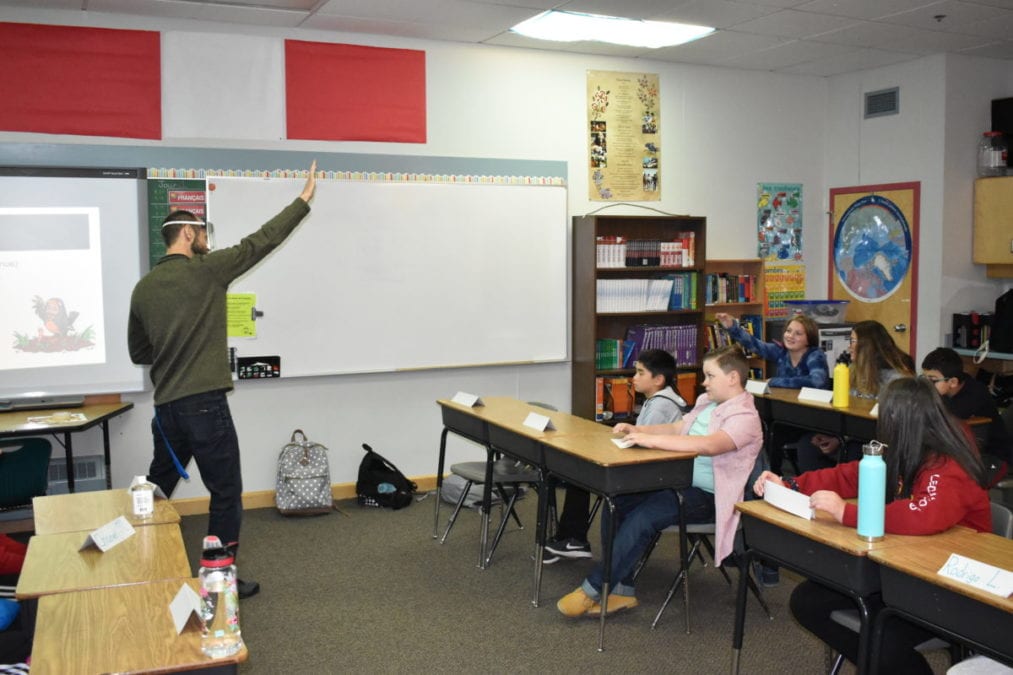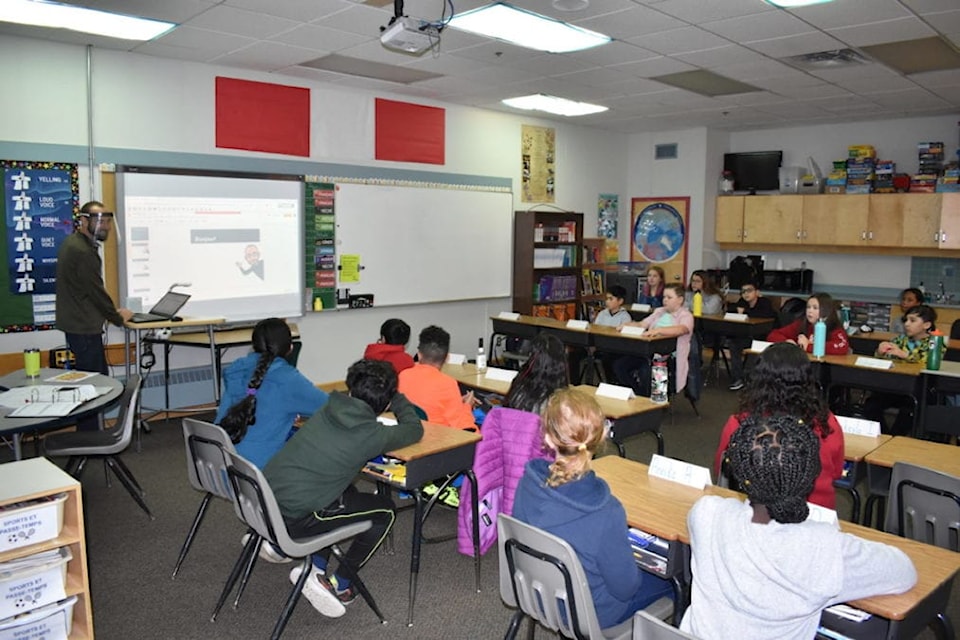A new university study that models how and whether Covid-19 would spread in school populations holds a dire warning for jurisdictions still experiencing community spread.
But the NWT faces a lesser risk of a severe outbreak or outbreaks causing a significant loss of school days for a couple of reasons, according to the Department of Education, Culture and Employment (ECE).
The risks posed by reopening schools were explored in an academic study published on Aug. 16 by four professors in Ontario. It offers a useful perspective on how the NWT might cope with the pandemic as the school year unfolds.

Blair McBride/NNSL photo
While the last of the NWT's five Covid cases recovered in April, the territory isn't risk-free, and the danger grows with larger classes, the study found.
Model-based projections for Covid-19 outbreak size and student-days lost to closure in Ontario childcare centres and primary schools, published on the MedRxiv health sciences portal, has projections based on class sizes of eight, 15 and 30 children in a hypothetical school of 50 teachers and students.
“We assumed there was a background rate of infection from other sources. Once infection was introduced, we explored how it would spread in the schools,” said Chris Bauch, a professor in the Department of Applied Mathematics at the University of Waterloo, and one of the study's authors. “In the model, when we doubled the class sizes then the cases would double. And then the days of (school) closure would double too. But, actually, we found it actually went up to quintupling when class sizes were doubled.”
Transmission was kept at the low end in the study by smaller class sizes and by infection control through effective mask wearing, social distancing and disinfection protocols.
The study was co-authored by professors Brendon Phillips and Dillon T. Browne – also from the University of Waterloo – and Madhur Anand from the University of Guelph.
Smaller class sizes in NWT
One factor in the NWT that reduces the high-end risk modelled in the study is that class sizes won't reach 30 students, because there aren't any classrooms in the system to house that many students, said ECE spokesperson Meagan Wohlberg.
In addition, the key factor that sets the NWT apart from the assumption in the MedRxiv study and from other jurisdictions where there were school outbreaks, is that there's currently no community spread of Covid in the territory, or any evidence that there has been community transmission, said Wohlberg.
All five of the territory's confirmed Covid cases occurred in people who had travelled outside the NWT and the virus didn't spread to anyone else after the infected individuals returned.
RELATED REPORTING: All five Covid cases in NWT have recovered, GNWT says
However, the peril of travel-related Covid cases is ongoing, and chief public health officer Kami Kandola has warned residents to expect more such cases in the near future.
A safeguard against travel-related spread among teachers was introduced in August, when all teachers who were outside the NWT had to return 14 days before schools opened so that they could undergo self-isolation and be cleared for going back to their schools.
RELATED REPORTING: Expect more travel-related Covid cases, Kandola says
“If the situation changes and the NWT moves to a new phase of Emerging Wisely, schools will adjust accordingly and are prepared to switch from classroom learning to remote learning when needed for individuals, classes, wings or the whole school, depending on the situation,” Wohlberg said.
Outside of an outbreak scenario, the reopening plans for schools in the NWT comprise increasing degrees of physical distancing in accordance with higher grade levels.
Junior kindergarten to Grade 6, for example, require no physical distancing inside classroom bubbles, although staff must try to stay two metres away from students and wear personal protective equipment when distancing isn't possible.
Students in Grades 7 to 9 must keep at least one metre apart, those in Grades 10, 11 and 12 must stay two metres away from each other.
Students who are 19 years or older are not permitted to attend classes in person.
High schools will have students in upper grades studying off-campus for half of the day and in-class for the other half, such as with students in Grades 10 to 12 at Sir John Franklin in Yellowknife. St. Patrick High School students in Grades 10 and 11 will follow the same format.
In case there is an outbreak at a school in the NWT, the government's protocol is to temporarily close the school to contain the spread, while health authorities undertake contact tracing and testing, according to an NWT Education Bulletin published on Aug. 25.
RELATED REPORTING: Parents must screen students each morning for Covid-19 symptoms: NWT Education Bulletin
Efforts have been made in the reopening plans to reduce class sizes where possible, with St. Pat's capping Grade 8 to 9 classes at 21 to 23 students, and Grade 10 to 12 classes at 14 to 15 students.
From the perspective of Bauch's study, this is the right approach.
“The opportunities for smaller class sizes should be explored. For example, in Ontario, in some kindergarten classes there are 30 students and two teachers. I recommend splitting them up into two rooms. It's a painless thing that can reduce the risk.
“In the NWT, cases are low now but that might not always be the case. But reducing class sizes is a low-cost way of reducing the risk.”
In response to the risks that the study highlighted, Kandola said there will “never be no risk” of Covid transmission and the territory must be ready to pivot as new information about the virus emerges and as the local situation evolves.
“We are confident our guidance, and the plans submitted by schools, are a strong foundation for mitigating risk of Covid-19,” said Kandola.
At Range Lake North School in Yellowknife, where classes resumed on Monday, Ian Cockburn's Grade 6 class of 18 students were spaced out in their desks in clusters of five and three.
Everyone stood for the Canadian national anthem at the start of class, but didn't sing, in accordance with Covid rules.
Cockburn wore a face shield during the class, as he guided students through self-introductions in French and then gave them high fives in the air.
Even though the school is only two days into the academic year, adherence to the Covid safety measures has made for a "really smooth start," said principal Yasemin Heyck. "The parents have been very supportive, the kids are following the protocols and the teachers are focused on teaching."
Heyck is also confident the Covid protocols are sufficient to protect against outbreaks.
"There will be things that come up that we might not expect but we'll deal with them as they come up. There is always going to be some fear around what will happen," she said. "Is there a ever a guarantee we'll be absolutely safe? No. But I'm comfortable now with the measures that we have in place."
